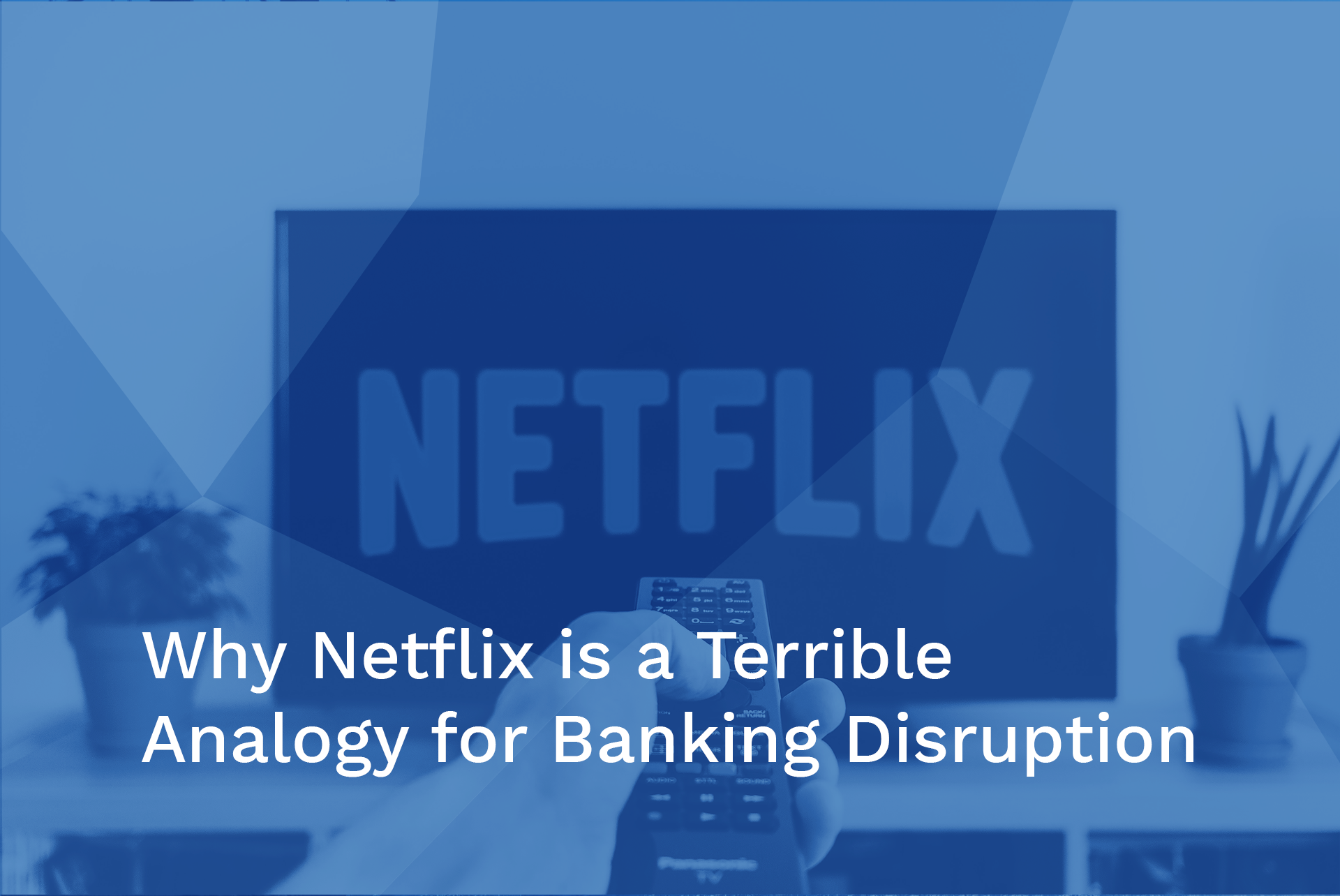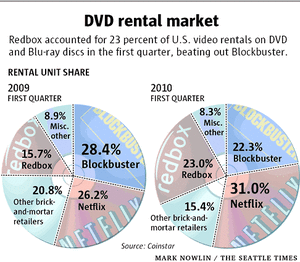
Why Netflix is a Terrible Analogy for Banking Disruption
Anyone who has LinkedIn connections in FinTech, or has attended an industry conference over the past few years will recognize the tacit belief that “banks are outdated and will be overpowered by a digital disrupter, much the same as how Blockbuster became obsolete with the introduction of Netflix.” While digital disruption seems to be inevitable in the banking industry, Netflix is actually quite a poor analogy for a few reasons that we’ll dive into in this post. (Feel free to use this idea to shake things up at your next FinTech networking cocktail event!)
There are three reasons that disruption in banking is going to be materially different.
1) Banks are not a single product business.Blockbuster’s business was really about one thing, renting movies, (sure, they also sold DVDs and candy bars) but their core business was rentals, and thus the disruption risk was highly concentrated. When a better model for renting movies came along, they weren’t prepared and were instantly at risk. Even the smallest banks are remarkably broad in the fact that they sell a multitude of products across various lines of business (checking, wealth, mortgage, credit cards, and insurance). In a world where most disruptors are closer to monoline propositions, they are at best disrupting a business line, not a bank. But, in addition, the breadth of bank relationships and the intertwined offerings always plays into another advantage for banks.
2) Some of the products work better together.
From a convenience perspective, and considering the underlying economics, disaggregating the whole bank into best-in-class services for a consumer does not necessarily work. As a consumer, you are usually willing to hold your nose on suboptimal products if it means that you can keep your business unified. From a balance sheet perspective, many activities (deposits and lending, equity underwriting and retail wealth) are much more profitable in a multi-line industry.
Bundling is a very efficient form of price discrimination — it reduces the “search cost” for a consumer and lowers the transaction cost for the seller. This makes it much harder for a single business line FinTech to disrupt a bank.
3) There are more banks than Blockbusters.
Banking and video rental have a fundamentally different market structure. Blockbuster was a monster in their market and there were relatively few other medium and large players — for the most part, they were followed by a string of very small independent rental outlets. American banking is quite an interesting market where five banks control 40% of retail deposits, forming a sort of oligopoly. However, the remainder of the US banking pie is spread across thousands of organizations, many of them quite large and well capitalized. Not to mention other banks such as BNY Mellon or GoldmanSachs who are highly competitive and powerful in banking segments.
While some are slower than others, most of these banks are thinking about how to compete in the future and they are deploying capital and focus appropriately. Just by randomness alone, you have to feel that some banks are going to evolve in interesting and relevant ways. Statistically speaking, not all of these banks can fail on strategy or execution.
Technically, Blockbuster had the right playbook, but failed on execution when the board failed to fund the losses required to forge a digital path forward. After that, it was game over for the entire category. The sheer volume of American banks creates much more opportunity to get things “right,” and the smartest banks are going to benefit in further consolidating market share.

4) There are many FinTechs and very few Netflix’s.
The market share chart above is quite interesting. By 2010, Redbox and Netflix had taken over 50% of the DVD Rental market and the Blockbuster bankruptcy was imminent. The big difference when comparing this to banking:
- First, as mentioned above, there are many multiple FinTechs chasing the various different lines of business a bank has, creating a massive amount of horizontal competition for time, employees, and capital.
- Second, it is apparent that there are category kings emerging in these FinTech verticals; whereby a FinTech company will specialize in a certain line of business a bank has.
- Third, trust is still a key value that banks have that most FinTechs don’t have on their own. Because of this, FinTechs will continue to rely on banks to service customers. Through these partnerships with FinTechs, banks can reinforce their customer relationships while extending their innovation exponentially. Because of the emergence of FinTechs, there has never been a better time for banks to embrace the future possibilities for innovation and customer experience.
Banks should not see innovation by FinTechs as a threat, rather, they should see it as an opportunity, since they are in a prime position to be innovative and disruptive by partnering with FinTechs to positively affect their customers and provide the banking experiences of the future.

